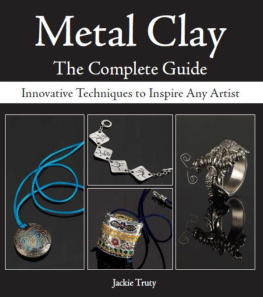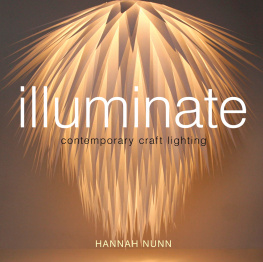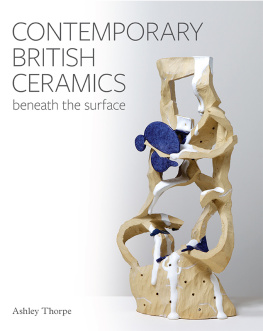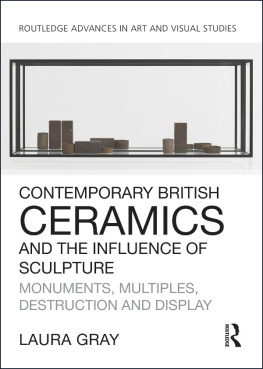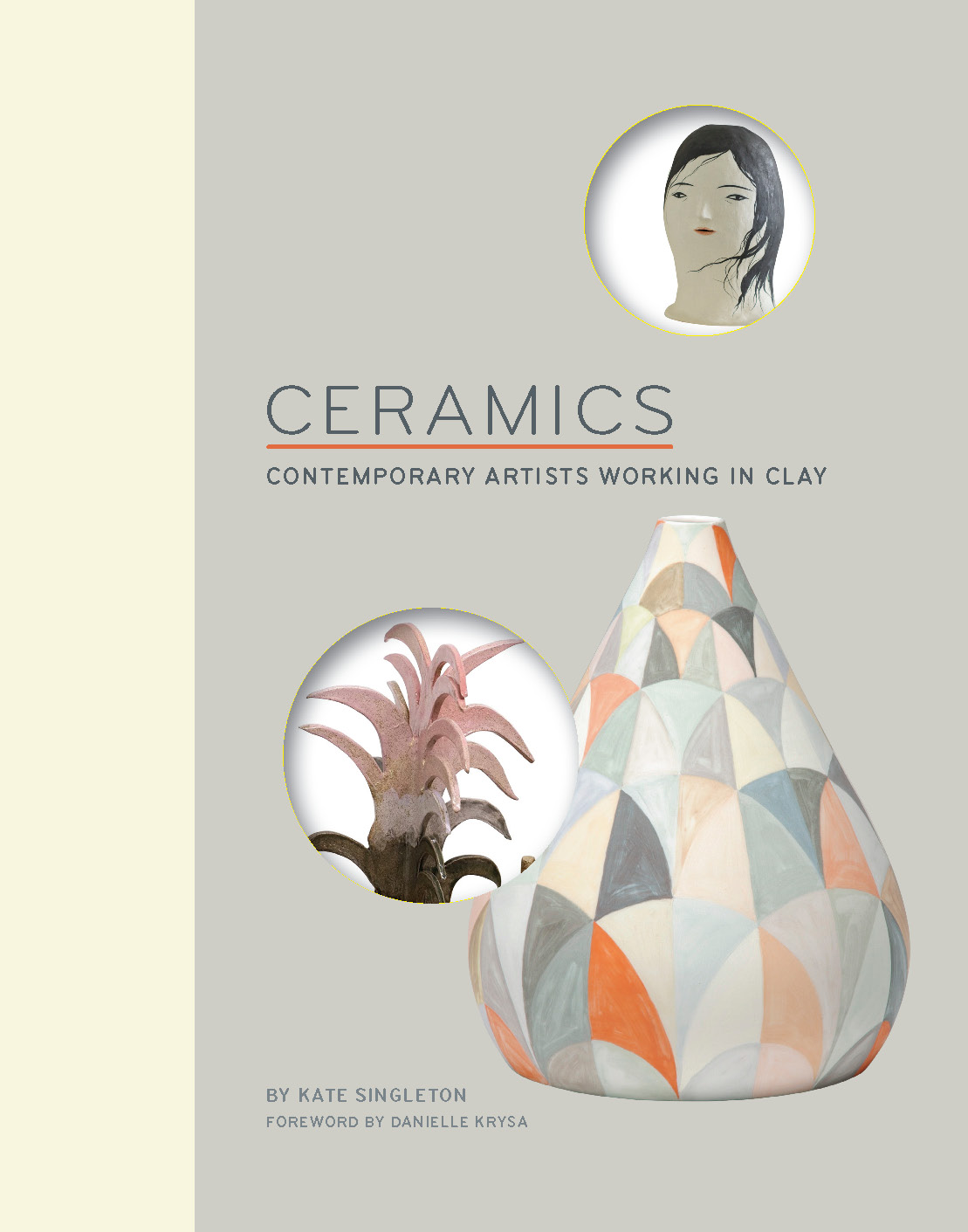




To my grandmothers, Betty and Joanne,
for passing down their love for art.
FOREWORD COPYRIGHT 2016 BY DANIELLE KRYSA.
TEXT COPYRIGHT 2016 BY KATE SINGLETON.
ALL RIGHTS RESERVED. NO PART OF THIS BOOK MAY BE REPRODUCED IN ANY FORM WITHOUT WRITTEN PERMISSION FROM THE PUBLISHER.
CONSTITUTE A CONTINUATION OF THE COPYRIGHT PAGE.
ISBN 9781452148151 (EPUB, MOBI)
LIBRARY OF CONGRESS CATALOGING-IN-PUBLICATION DATA:
NAMES: SINGLETON, KATE (KATE J.), 1983- AUTHOR. | KRYSA, DANIELLE, WRITER OF FOREWORD.
TITLE: CERAMICS : CONTEMPORARY ARTISTS WORKING IN CLAY / BY KATE SINGLETON ; FOREWORD BY DANIELLE KRYSA.
DESCRIPTION: SAN FRANCISCO : CHRONICLE BOOKS, 2016.
IDENTIFIERS: LCCN 2015037471 | ISBN 9781452148090 (HC)
SUBJECTS: LCSH: ART POTTERY21ST CENTURYTHEMES, MOTIVES. | CERAMIC SCULPTURE21ST CENTURYTHEMES, MOTIVES.
CLASSIFICATION: LCC NK3940 .S56 2016 | DDC 730.1DC23 LC RECORD AVAILABLE AT HTTP://LCCN.LOC.GOV/2015037471
DESIGN BY SARA SCHNEIDER
ARTWORK BY TANIA ROLLOND AND JULIA HUTEAU
ARTWORK BY NATHALIE CHOUX
CHRONICLE BOOKS LLC
680 SECOND STREET
SAN FRANCISCO, CALIFORNIA 94107
WWW.CHRONICLEBOOKS.COM
CONTENTS



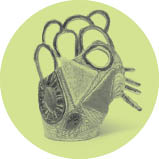
FOREWORD
BY DANIELLE KRYSA
What comes to mind when you think of ceramics? Wobbly mugs and crooked bowls that you made at summer camp? A few years ago, thats probably exactly where my thoughts would have gone. However, after writing a contemporary art blog for years, my eyes have been opened to so much more. Now, to be totally clear, Ive never actually worked in ceramics myselfwell, unless you count the wonky ashtray that I made as a Girl Scout, circa 1979 (yes, they taught children to make ashtraysit was a different time). That said, even though I havent personally mastered this particular art form, I do have a smallall right, fairly hugeobsession when it comes to contemporary ceramics. There is something very special about work that beautifully, and seamlessly, blurs the line between fine art and craft.
Ah, yes, art or craftthat is such an interesting topic, and ceramics are right in the middle of that discussion. Honestly, this conversation always hurts my head a little bit. What makes something art versus craft? Intent? Venue? Scale? Volume? Price? Marketing? Ouch, theres that headache again. For me, the wonderful thing about ceramics in particular is that it allows artists to use a traditional medium to create functional pieces, fine art pieces, and an exciting combination of the two. (You cant say that about paintingunless of course you try serving dinner on a canvas.)
In recent years, there seems to be a movement happening in the art worldwork that used to be traditionally thought of as craft is making its way onto the white walls of galleries and museums all over the world. Embroidery, crochet, and yes, ceramics. It thrills me every time I see this kind of work pop up in shows, and in writing this foreword, I had to stop and truly think about why I am so drawn to this craft-turned-art type of work. Perhaps there is comfort and familiarity in everyday materials like thread and clayand then, in the hands of the right artists, those familiar materials are elevated to new artistic heights. Ive talked to so many people who say theyre intimidated by the art worldthat its a place reserved for other peopleand these are people who study, collect, or make art every day. And maybe thats why fine art that is rooted in a craft background feels more accessible to a larger audience. It might not be your wonky ashtray, but you can recognize ceramics as being part of your day-to-day world, functional yet artistic, allowing you to not only live with art in your home but to actually use it as well.
As this art/craft line continues to blur even more, were beginning to see a new crop of ceramic artists emergingoften trained in other disciplineswho just view clay as yet another material to add to their creative toolbox. An idea might be expressed best using paint, or photography, or perhaps the tactile, form-shaping properties of clay will be the most clever way to share the story. Illustrators are taking drawings from the page and reimagining them into three-dimensional forms, sharing their ideas in an entirely new way. Painters can exchange canvas for clay slabs, and photographers are able to transfer their images onto objects, changing their work dramatically.
All of the beautifully curated work by the very talented artists in this book pushes clay to new places, no longer for the cupboard alone: these artists have taken ceramics from the kitchen counter to the gallery wall.
INTRODUCTION
Ceramics has sparked the imagination of a new generation of artists who are redefining this previously overlooked art form. What was considered a quiet, traditional art practice has been reinvigorated by these artists creative energy and cross-media experimentation. The stunning ceramics that have come out of this resurgence have not gone unnoticed, and you are likely to see ceramics regularly featured in art blogs and glossy magazines, and handsomely displayed in galleries and design outposts. While some artists featured in this book have devoted themselves entirely to ceramics, many others have multifaceted practices that overlap in areas such as illustration, drawing, and painting. Despite differences in style, background, and geography, the ceramicists featured in the following pages cite the same fundamental reasons for working in clay: its intimate process, versatility as a medium, and rich history. Above all, they choose to work with clay to create art that transcends the canvas or sheet of paper and exists in the three-dimensional, physical, tactile world.
For decades material-based art forms like ceramics were marginalized, downgraded to the category of craft. Many dedicated and distinguished potters continued making exceptional work, but on the whole, ceramics made few waves in the conversation on new art and visual culture. Then, in 2003, renowned British potter Grayson Perry won the Turner Prize, and ceramics was thrust into the spotlight of the international art scene. Perry stated that at that time, pottery was seen as a second-class thing in relation to more prestigious art forms such as painting and sculpture. In the years since his historic win, the distinction between fine art and craft has crumbled, and a new era of creativity in ceramics has arrived. Today ceramics has emerged as a mainstream and highly relevant contemporary art form. As writer Lily Wei humorously put it in
Next page

